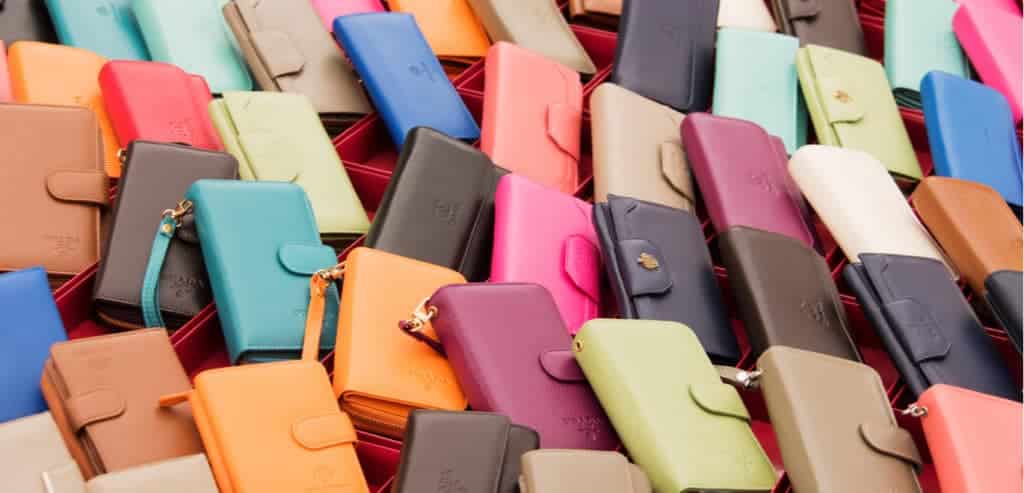
Despite being solidly in the 21st century, today the integrity of products shipped from one place to another is still checked using old-fashioned methods. Recipients like border officers or wholesale customers resort to manually opening crates and containers to physically inspect items for authenticity.
Unfortunately, the eye can lie. It can be hard to verify integrity using an on-the-spot visual check alone. But thanks to recent technological innovations, the fake detection business is getting an upgrade. There are a multitude of solutions chipping away at counterfeiting across various industries in various points of the supply chain. But are these tools enough?
Package signatures
You’re probably used to signing for a package delivery—an ancient fail-safe to ensure the authenticity of the delivery. Well, now packages themselves come with their own unique “signature.”
In “ laser surface authentication ” (LSA) from companies like Ingenia , a laser is used to measure specific characteristics of a product’s packaging at the point of assembly. The collected “signature” is stored in a database, where it is compared to what is scanned when the package is subsequently delivered to its destination.
There are around 50 different holograph vendors making around 20 different kinds of holograms.
If the received package’s signature does not match that taken at source, the recipient knows the product has been damaged or rendered different in some way.
Holographic bubbles
Holographic stickers have been used for years in authentication. But the key to holographic integrity lays deep inside.
The bubbles within a hologram are completely unique. That means if the bubble is logged on the way out, a received product can be scanned against unique outbound items. Companies such as 3M already use solutions from companies like Authentix in this regard. But any static added measure like a hologram, long-term, has the potential to be reverse-engineered and copied.
DNA ink
What if the flowers in your garden could help you spot a fake Rolex? In “molecular tagging”, Applied DNA Sciences extracts plant DNA, mixes it to form a unique identifier which is in turn sprayed on brands’ products before shipment, creating a one-of-a-kind, undetectable code.
Cloning this technique is likely to be extremely difficult, and this spray stays applied to a product far down the supply chain.
Computer vision
Visual product inspection can still be useful for spotting fake or corrupted goods—particularly when cognitive computing power helps out.
Computer vision is the automatic extraction, analysis and understanding of information contained in a photograph. High-end computer power, and smart algorithms which depend on it, are now available to help vendors like Entrupy peer deeply into products or read microscopic codes borne on them, comparing against a database of items known to be genuine in order to learn what may be a fake.
RFID chips
When you buy an expensive pair of shoes, you don’t necessarily expect to find a microchip inside it. That’s likely set to change, as manufacturers realize RFID, the same technology used to power mobile payments, can also help counter the counterfeits.
Last year, Italian jacket-maker Moncler said it would place RFID chips in each of its jackets, so that consumers can use their phone to check the authenticity of their purchase. Shoemaker Salvatore Ferragamo has been embedding the chips into the left soles of women’s shoes for even longer.
The challenge
While each of these solutions are useful in different ways, each remains too fragmented to represent a broad, overall solution to the proliferation of counterfeiting.
There are currently around 50 different holograph vendors making around 20 different kinds of holograms. Many authentication solutions apply secondary measures to products after assembly, which also involve giving scanners to supply-chain actors. As a result consumers are forced to turn to manufacturers themselves to verify authenticity.
We are seeing manufacturers like Rolex begin to develop their own authentication schemes, but they too are beginning to become so fragmented and piecemeal when you consider the entirety of a buyer’s shopping life. Will it be easy for shoppers to adapt to a different verification scheme with a different source of authority for every product?
In order for us to effectively stamp out the continued rise of counterfeiting, all industries must band together to harmonize these disjointed efforts to validate our products. A single unique language or authentic identifier that can be applied to all objects in the same way must be the goal of manufacturers, distributors, resellers, customs officials and buyers alike.
Building it is going to require a highly integrated and collaborative approach. For now, we should not let the good work of the new “check-tech” go to waste. If everyone works together, I believe we can dramatically reduce the damage caused by this global scourge.